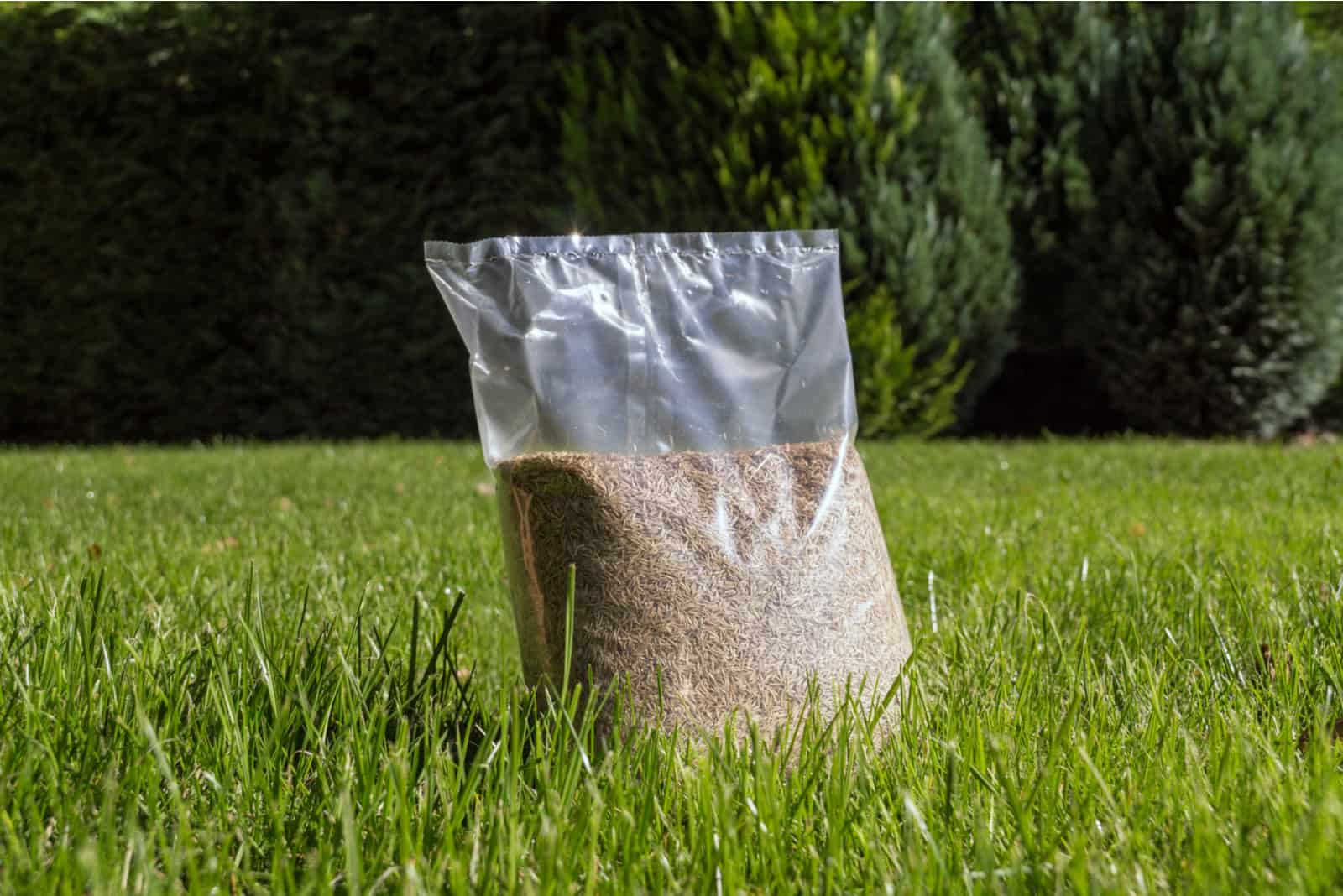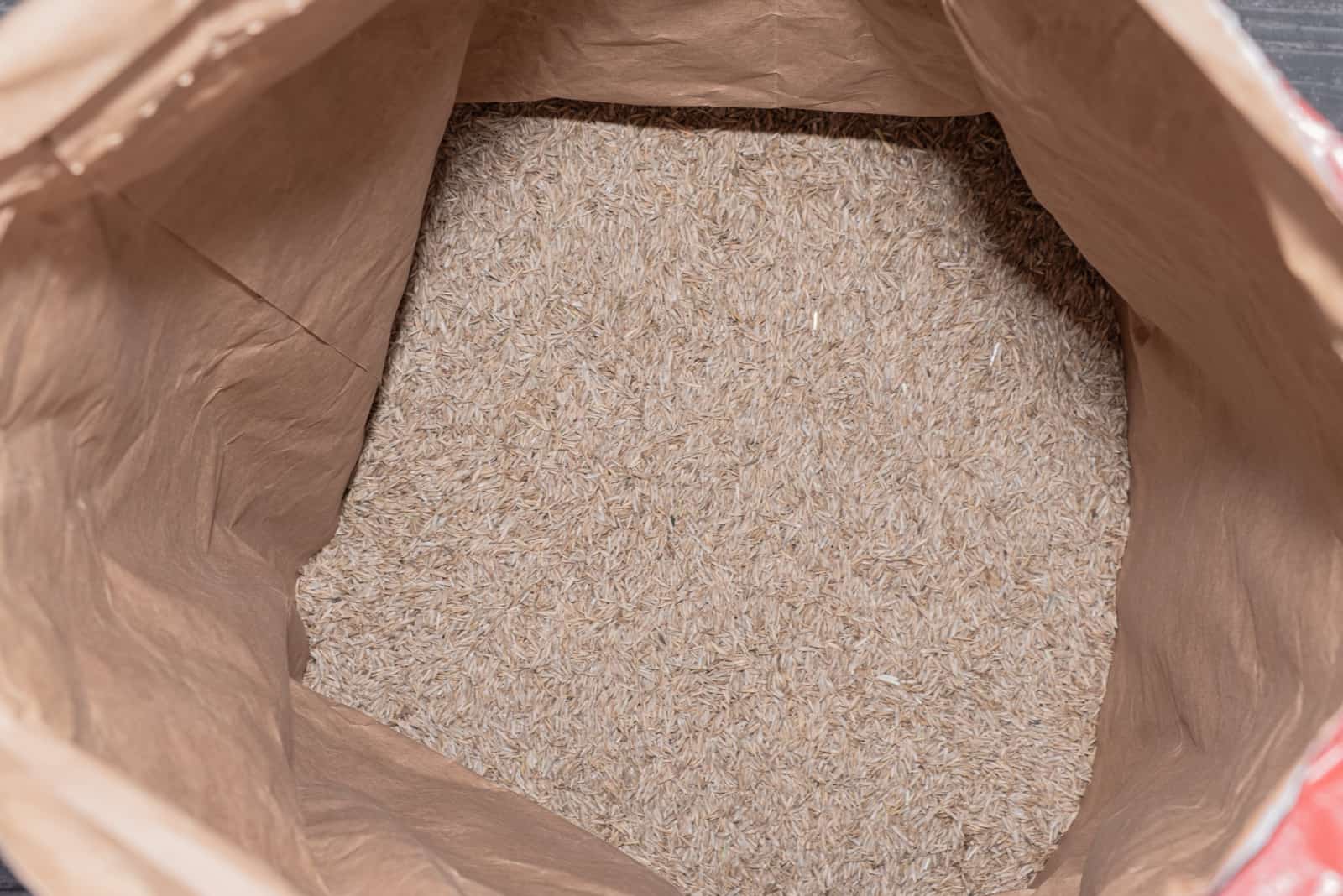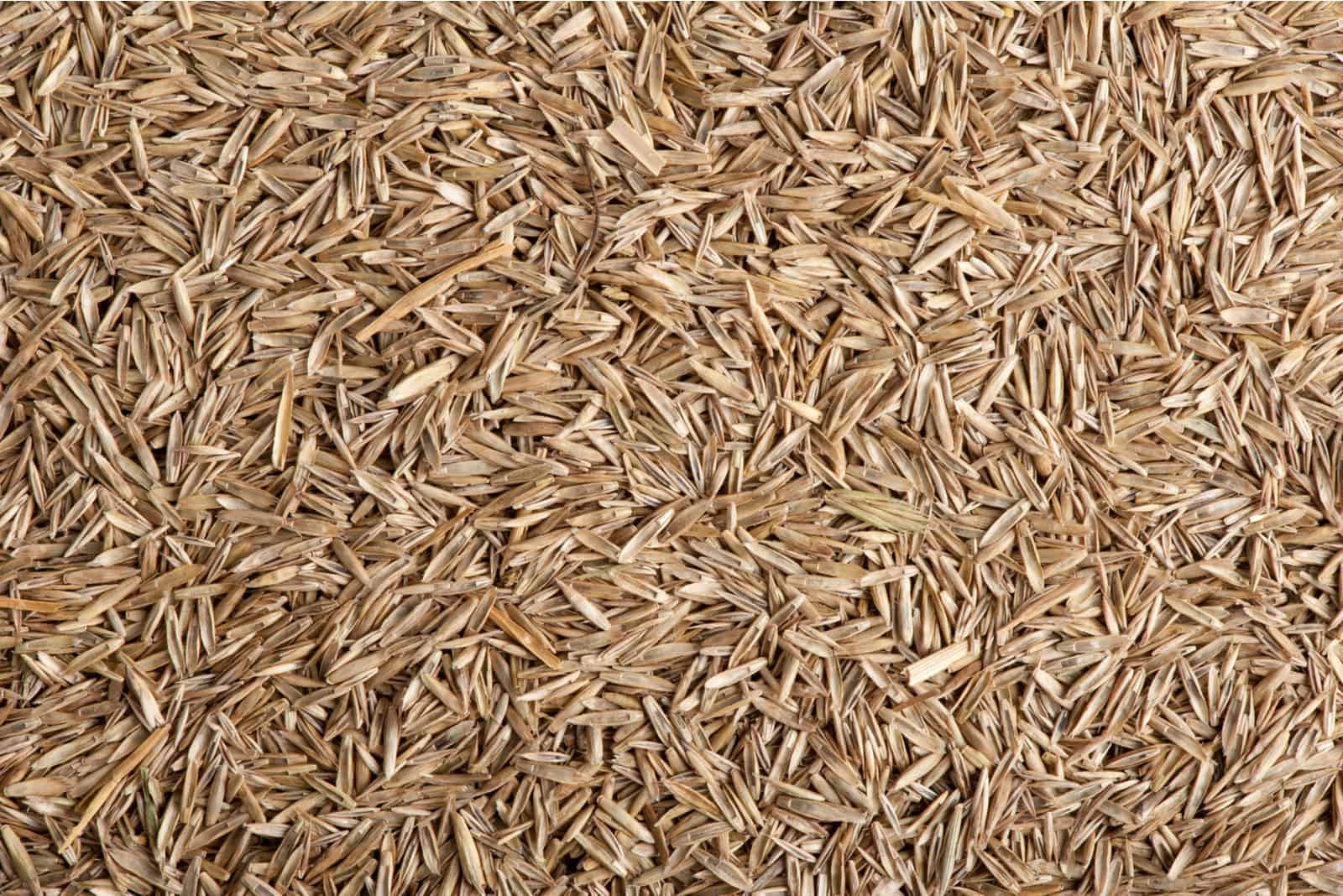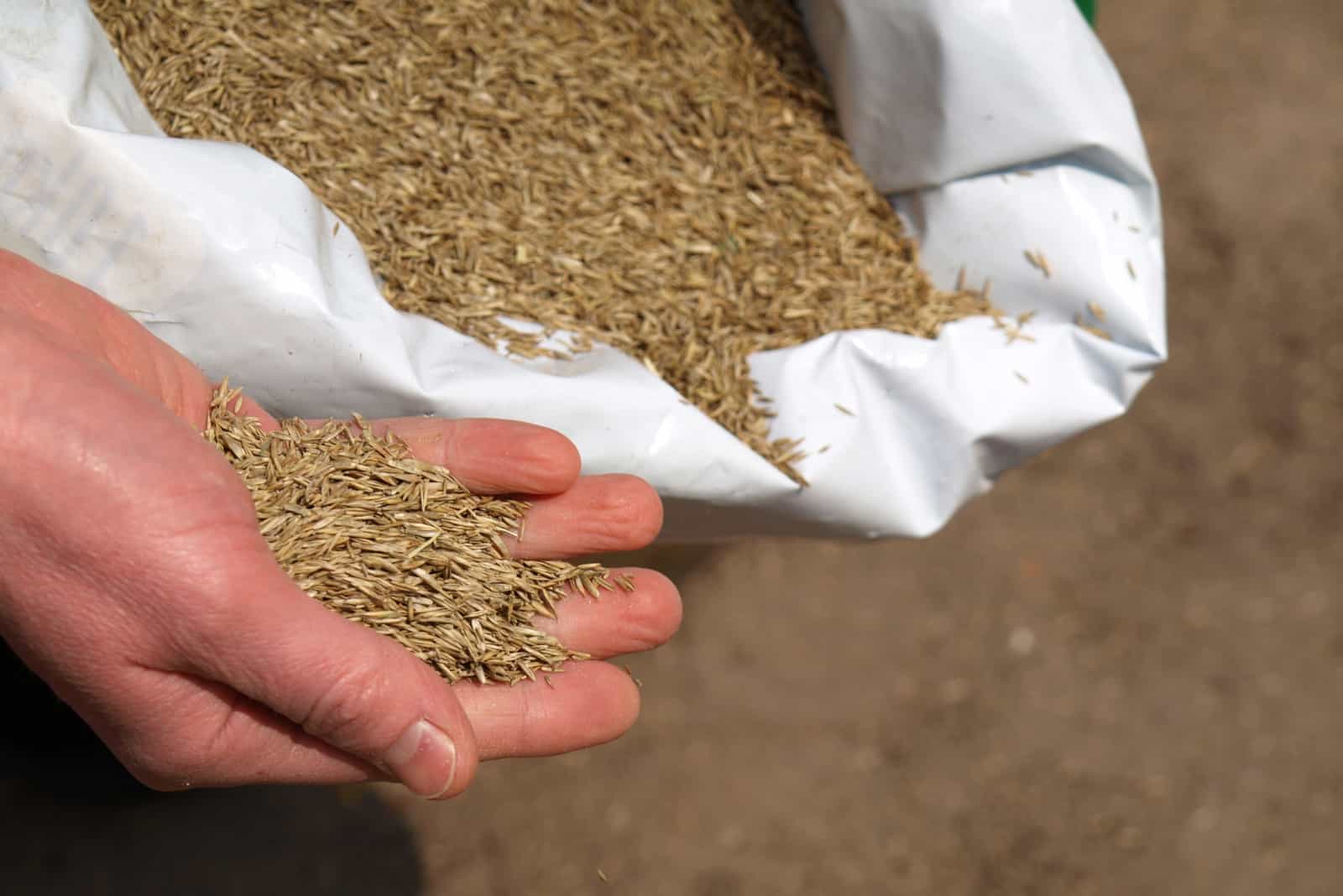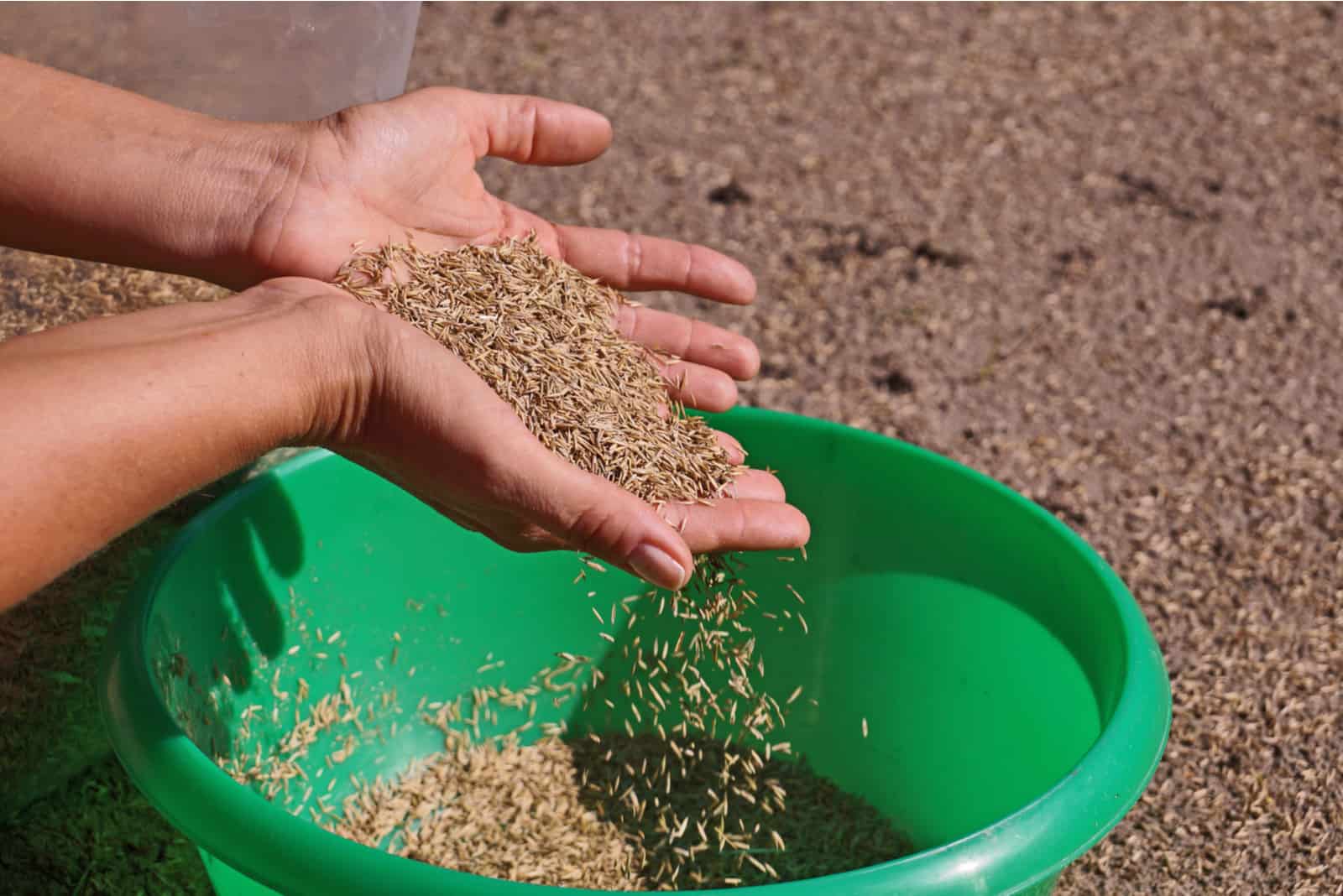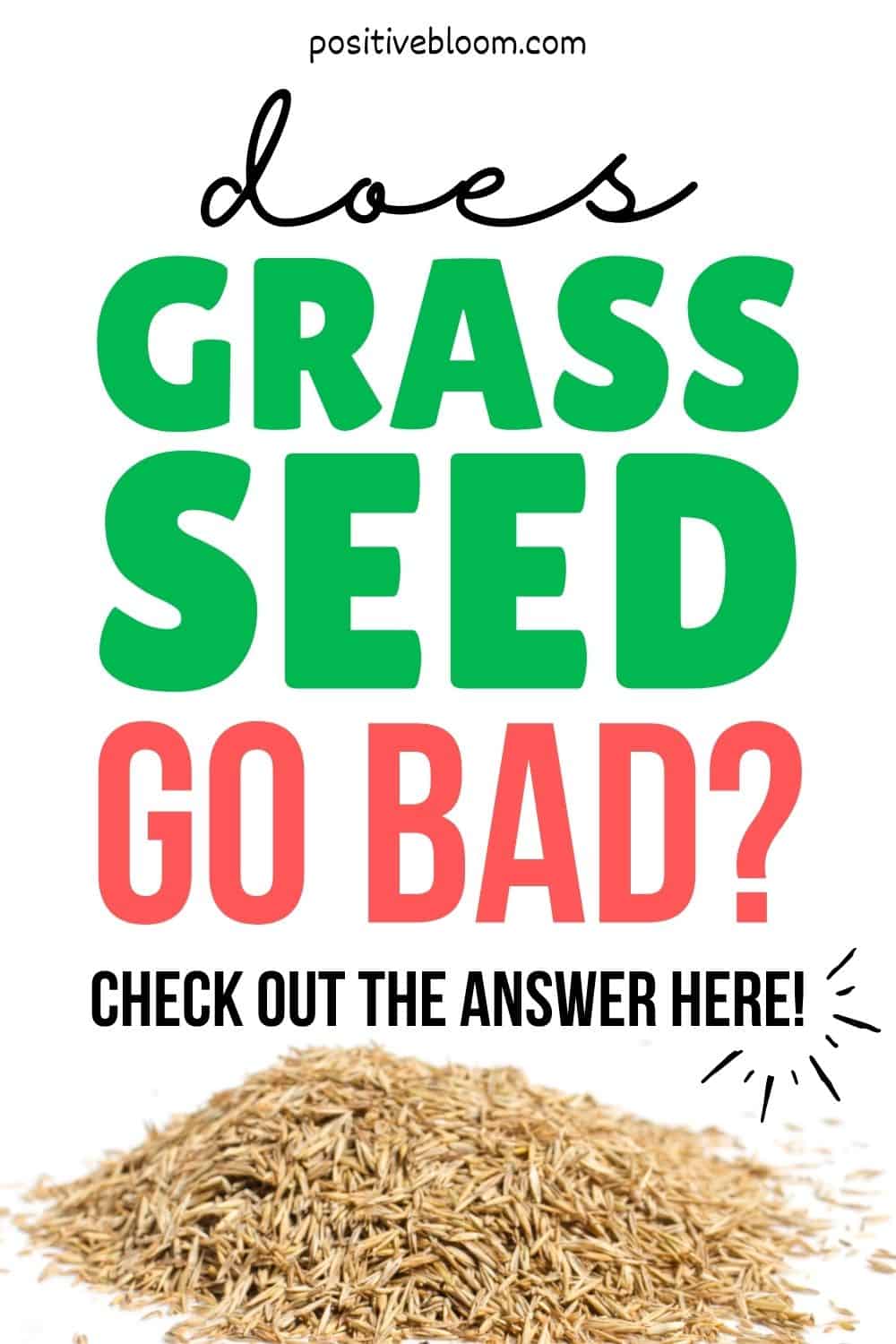Positive Bloom is an Amazon Associate and we earn from qualifying purchases through these links at no extra cost to you.
If you’ve had a bag of grass seeds in your shed for as long as you can remember, but just can’t bring yourself to throw it away, I totally get you! I hate throwing away things that can be used as well.
So, if you’re now planning to sow those old grass seeds in your garden, and you aren’t sure whether they will grow or not, what will you do?
I have all the information you need right here, so read on to find out does grass seed go bad? And plenty more!
Let’s get started.
Does Grass Seed Go Bad In The Bag?
The honest answer is, yes. Grass seeds can go bad.
Whenever you’re buying seeds, and you aren’t sure if they’re good or bad, you should check the expiration date.
If the expiry date has passed, then don’t even consider buying that bag of seed.
However, if you already have a leftover seed bag that has expired, you don’t have to throw it away as it can still be used for growing grass.
For each year that passes after the bag has expired, the germination rate decreases by about 10%, which means that one in five seeds will germinate.
So you can sow them, but you will need a lot more seeds to get full coverage for a given area.
How long does grass seed stay viable?
It depends on the storage conditions. If you have sealed the bag and stored it properly in a dry place, it will extend the shelf life by up to 18 months.
You can store grass seeds for 2 or 3 years as a rule of thumb.
However, you can also use a bag of 5-year-old grass seed if you haven’t opened bag before.
How can you tell if grass seed is bad?
There are some other things you can take into account in addition to the expiration date.
You can look for mold and discoloration, which is like a universal indicator that something has gone bad. If the bag has not been stored in a dry place, moisture can cause rotting, which you can see with your eyes, although the smell is pretty horrible too!
When it comes to lawn care, you might notice patches and bare spots if you sowed old seeds, even if you used proper soil and a spreader for the best possible outcome.
How can you tell if grass seed is good?
If there is no mold in your seed packages and the smell is pretty decent you should be OK. However, if the date has expired and you aren’t sure whether it’s worth the trouble to sow the seed just to end up with no grass, we have the answer!
You can do a DIY test of the seeds’ viability, simply follow these steps:
1. Place a damp paper towel in a cup and add water to the bottom.
2. Take a couple of seeds and put them in the paper towel.
3. Put a plastic bag over the top of the cup to mimic the greenhouse effect.
4. Pay attention to the paper towel and add water to keep it moist.
5. Place the cup somewhere dry and sunny.
The seeds should germinate in two weeks, and you will be able to see the little sprouts. If they don’t appear or there are only a few of them, consider buying new grass seeds.
How Do You Store Grass Seed?
If you have recently planted fresh seed for the new growing season, but have ended up with more bags than you needed, there’s no need to throw them away.
You can follow the instructions below to find the best way to store grass seed in your garden shed.
Storage location
One of the most important things that affects grass seed viability is the storage location, mainly because you need to consider factors like temperature, air circulation, and moisture level.
People don’t want to spend a lot of money on high-quality grass seeds just to have them rot in a year because of poor storage.
Ideal conditions for seeds is storing them in bags with mesh air vents or burlaps that provide an optimal airflow, while also keeping insects away from the seeds. The bags of seeds should be kept in a cool, dry place.
You can find high-quality burlaps on Amazon as well!
[lasso id=”3968″ link_id=”2943″ ref=”amzn-burlap-bags-22-x-36-great-for-planting-gardening-kids-sack-bag-sacks-burlap-by-sandbaggy-pack-of-10″]
Homeowners tend to store grass seeds in basements and sheds, while others put them in freezers (the freezing temperature should not be changed though!).
Temperature & humidity
Grass seed germination usually occurs when the air temperature is warm, and we don’t want our stored seeds to germinate before we plant grass seeds.
According to Oregon State University, the best temperature for storing grass seeds would be below 60 degrees Fahrenheit.
You should also pay attention to humidity as it plays an essential role in storing grass seeds.
The best relative humidity levels would be less than 60%. Anything higher would increase the moisture content in the bag.
High moisture content would make your seeds susceptible to fungal infections, damaging the seeds to the point they are no longer usable.
Let me tell you a little secret – you can actually put a container of baking soda in your seed bag to decrease the moisture content.
Animals & pests
Ants stealing grass seeds is a common issue when keeping grass seed bags stored for a long time.
How can you stop these little thieves?
First, you should spread the seeds on a white sheet and throw out every ant you find. Place the seeds in a suitable container such as burlap or a mesh bag, which will protect your seeds.
If you have any issues with rodents in the basement, place traps and ensure there aren’t any stealing your seeds!
Insects like weevils also love grass seeds! To keep them away from your precious seeds, clean the place before storing them and maintain low moisture throughout the storage period.
At last, you can check out this video on how to properly store your seeds:
Frequently Asked Questions
What seed type can last the longest in storage?
Perennial Ryegrass and Kentucky Bluegrass are commonly known as hardy types of grasses that can be stored for a couple of years. These types of grass seed expire after a few years if stored properly.
For instance, Ryegrass seeds can still germinate even though they have been stored for up to 5 years!
However, Kentucky Bluegrass and Fescue grass seeds can stay viable for 2 to 3 years with proper storage.
So if you accidentally buy a few more bags than you need, don’t worry! Use these tips to store them properly and they’ll be fine.
What is the best grass seed brand?
The best grass seed brand, according to consumers, is Scotts. They can be stored for at least three years!
Other popular brands are Pennington and Jonathan Green, both high-quality seed brands, but with a shorter shed life when compared to Scotts brand.
You can find these grass seed brands online on websites like Amazon or Etsy, however you can always visit your local gardening shop and buy them too.
[lasso id=”3967″ link_id=”2944″ ref=”amzn-scotts-turf-builder-grass-seed-kentucky-bluegrass-mix-7-lb-use-in-full-sun-light-shade-fine-bladed-texture-and-medium-drought-resistance-seeds-up-to-4660-sq-ft”]
How old is too old for grass seed?
You have to take into consideration what type of grass seeds you’re dealing with, and whether they have been properly stored. For instance, Ryegrass that has been stored properly can last for 5 years!
However, the majority of grass seeds that have been stored in adequate storage conditions – that is, somewhere dark, cool, and with low levels of humidity – can be used after 2 to 3 years.
It would be best to use your stored grass seed after 1 year because they are still pretty viable and you won’t end up with patches all over your lawn!
Seeds that have been stored over several years are barely viable, so I wouldn’t even bother planting them.
Conclusion
Now that we have analyzed grass seeds in detail, we can conclude that the answer to our question “does grass seed go bad?” Is yes, eventually it does.
No matter what grass seed brand you buy, make sure to get the correct type for your climate. You can choose between warm-season and cold-season grasses.
If you don’t use all the seeds in one season, no problem! Because you can always store them and use your leftover seeds the next year!
However, make sure to store them in a dark place with cool air temperature and relatively low humidity levels.
This way you can store your grass seeds and use them for up to three years!
Although you should take into consideration that the germination rate decreases each year, which causes patches to occur in your lawn.
Until next time!
Like this post? Share or pin it for later!

